As of October 7, 2021, Maya-3 and Maya-4 beacons were successfully received and decoded during the 9:00 AM PST pass remotely through the Philippine Universities Ground Archiving and Data Reception (PUGAD) station in UP Diliman.
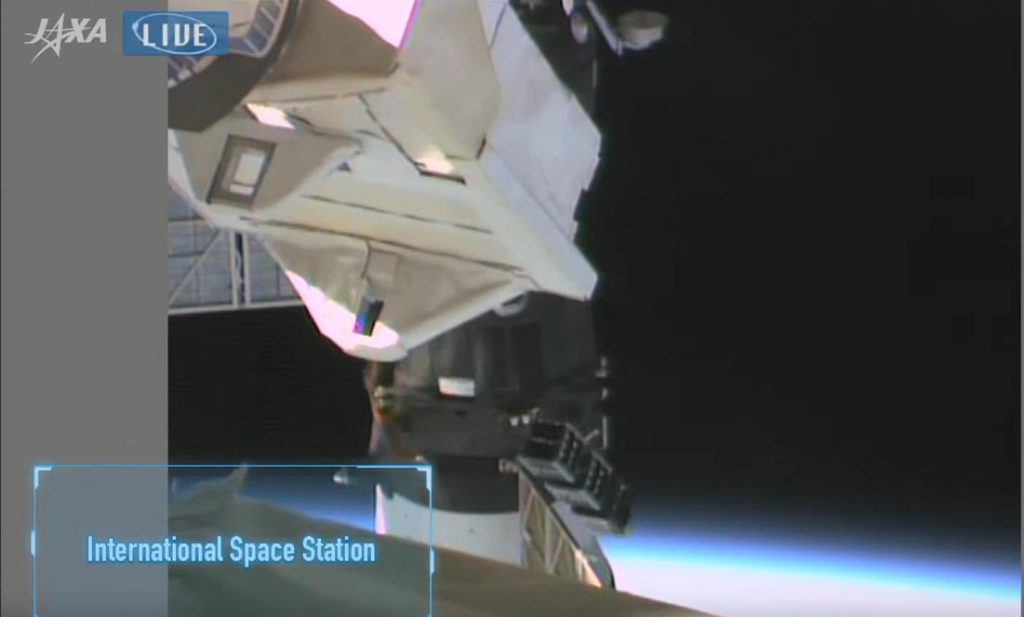
Captured from the JAXA livestream.
The Philippines’ first university-built cube satellites (CubeSats), Maya-3 and Maya-4, were released to space from the International Space Station (ISS) on October 6, 2021 at 5:20 p.m. PST via Japan’s Japanese Experiment (JEM) or “Kibo” Laboratory Module.
The JEM Small Satellite Orbital Deployer (J-SSOD), including satellite install cases with the CubeSats, were installed on the Multi-Purpose Experiment Platform (MPEP) by ISS crew members and is passed through the Kibo airlock for retrieval, positioning, and deployment by the Japanese Experiment Module Remote Manipulator System (JEMRMS). The released CubeSats will move along an orbit similar to the space station’s, which is at an altitude of approximately 400 kilometers.
This latest development follows the CubeSat’s launch to the space station on August 29, 2021 at 3:14 P.M. (PST) aboard the SpaceX Falcon 9 rocket’s Dragon C208 as part of SpaceX Commercial Resupply Mission-23 (SpX-23). They have been released along with other CubeSats from Australia, namely, Biner-1 and CUAVA-1, developed by Curtin University and the University of Sydney, respectively.
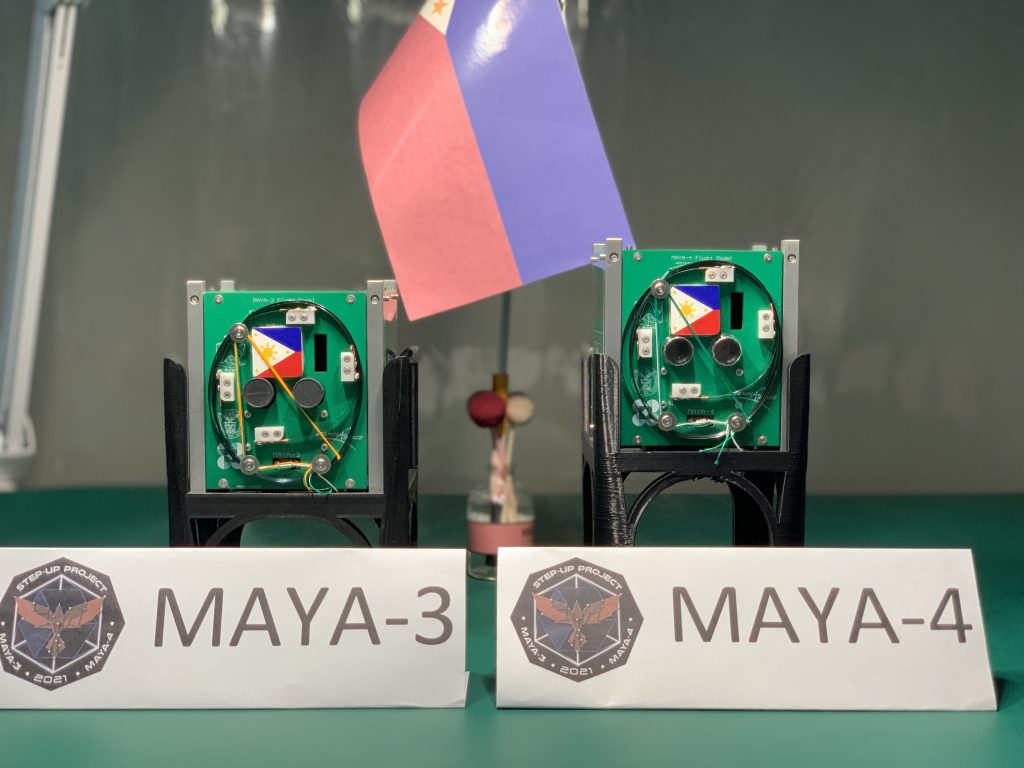
The two CubeSats were developed under the Space Science and Technology Proliferation through University Partnerships (STeP-UP) Project of the STAMINA4Space Program, which is funded by the Department of Science and Technology (DOST) and implemented by the University of the Philippines Diliman (UPD) and the DOST Advanced Science and Technology Institute (DOST-ASTI). Maya-3 and Maya-4 were built by the first of two batches of STeP-UP scholars taking the nanosatellite development track under the Master of Science (MS)/Master of Engineering (MEng) program of the UPD Electrical and Electronics Engineering Institute (EEEI). The development of the CubeSats is in collaboration with the Kyushu Institute of Technology (Kyutech) in Japan, with scholarship support from DOST-Science Education Institute (DOST-SEI).
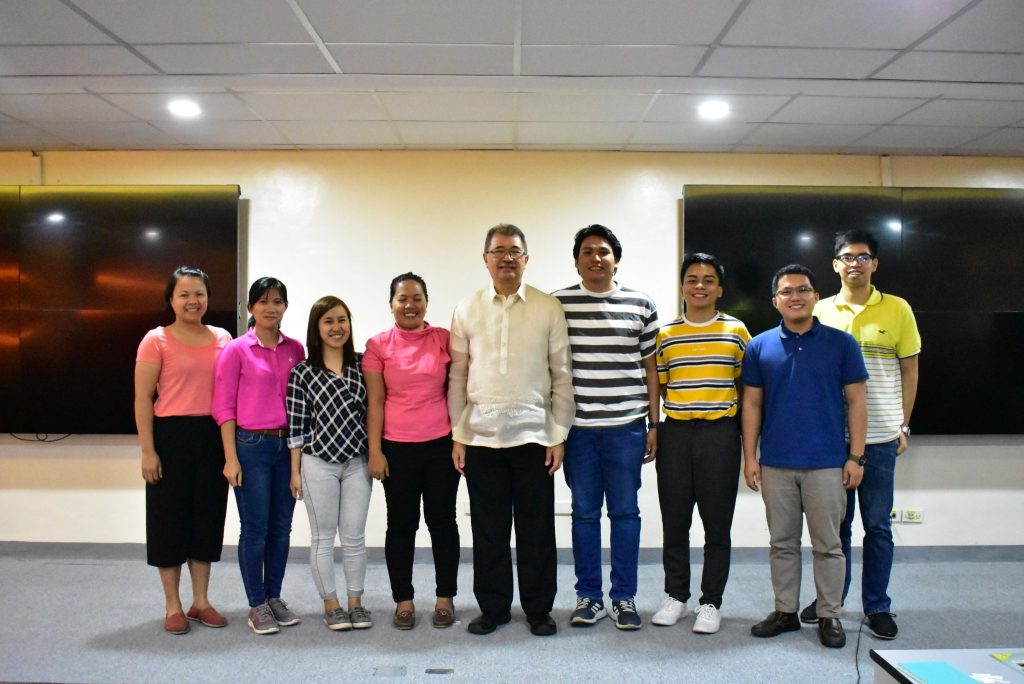
From left to right: Christy Raterta, Marielle Magbanua-Gregorio, Gladys Bajaro, Lorilyn Daquioag, Renzo Wee, Bryan Custodio, Judiel Reyes, and Derick Canceran with DOST Secretary Fortunato dela Peña (center)
“This is a very historic and important day, because the world has witnessed the deployment of the Maya-3 and Maya-4 cube satellites from the International Space Station (ISS) to outer space. These two CubeSats are the first Philippine university-built cube satellites developed by Filipino scholars,” said DOST Secretary Fortunato de la Peña in his message during the deployment program hosted by the Japan Aerospace Exploration Agency (JAXA), and congratulated all the groups involved.
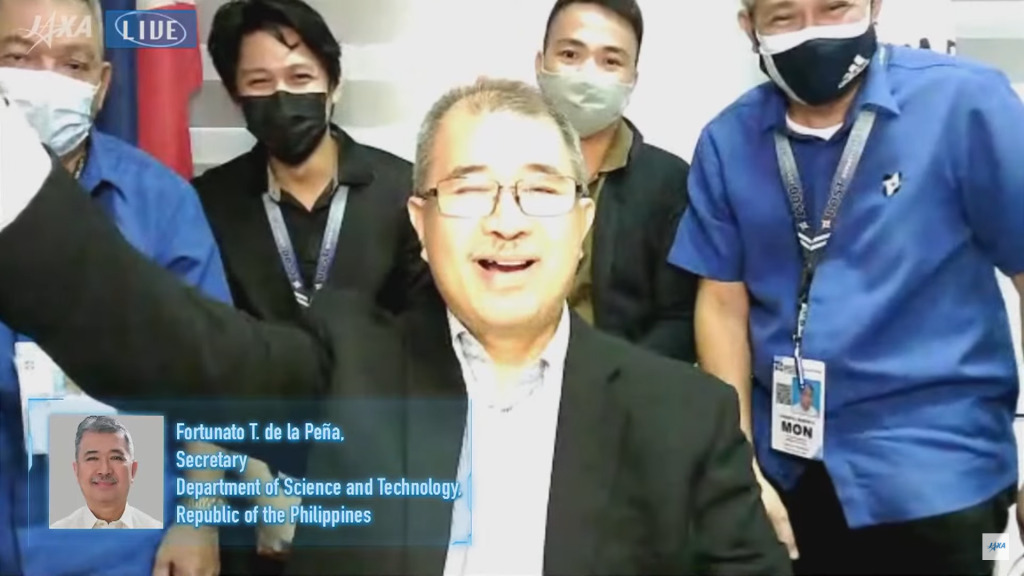
UPD Chancellor Fidel Nemenzo commented on the impact this latest development will make on the youth. “As I have said during the launch of microsatellites Diwata-1 and Diwata-2, this project of building our own satellites has the power to inspire students and young children to study space science and engineering,” he said. “This will help break down psychological barriers for many young and aspiring scientists. Space technology is no longer something we just read in books and see in movies. Space is no longer the exclusive territory of advanced, industrialized countries and superpowers. Space is something within our reach, especially with support from the government, and the public and our partners.”
Next steps after deployment
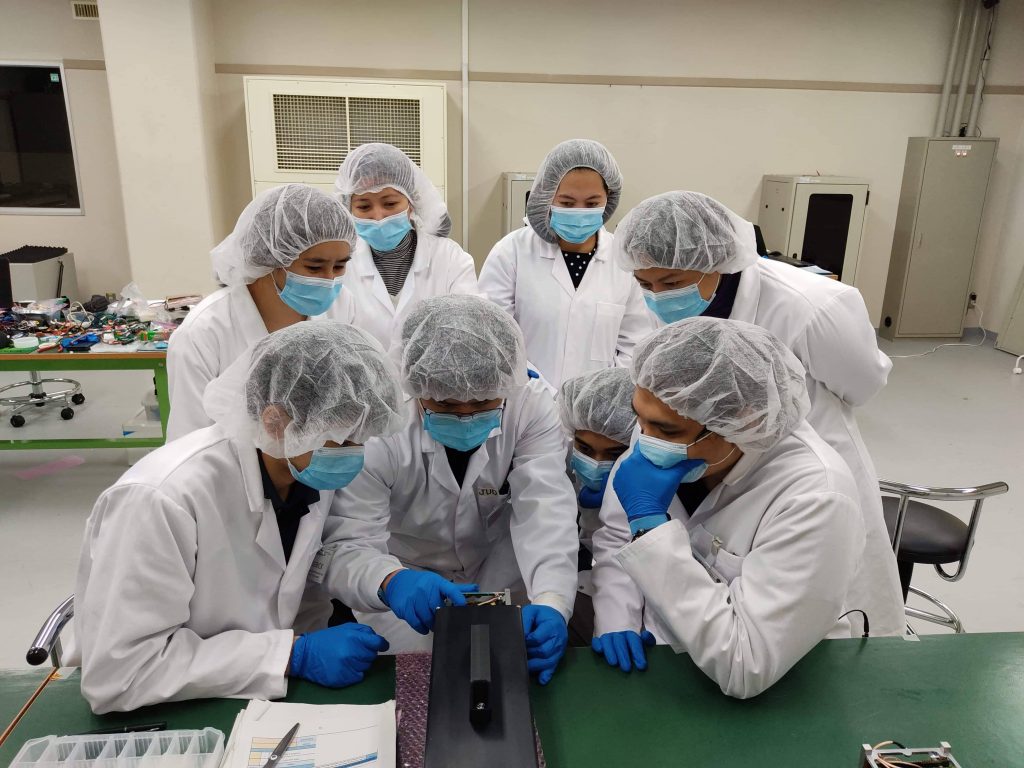
Now that the satellites are in space, the STeP-UP Batch 1 scholars shared that this means they can begin testing the different functionalities of the CubeSats. Prior to release, the team already prepared the schedule of activities for the ground station operations including the sequence of the command uplinks for the CubeSats. Initially, the team will monitor the satellite condition by receiving and decoding its CW beacon before sending commands for the CubeSats to perform. “It’s [going to be] like hearing a newborn baby’s first cry,” said the STeP-UP batch 1 scholars.

Simultaneously, the team has also coordinated with various ground stations internationally and locally to assist with the tracking of the satellites. Moreover, the team will record and assess the satellites’ functionalities and collect data from the CubeSats during the operations to evaluate its overall performance. This can be used as reference in planning for future satellite developments and related projects.
“The team is extremely excited now that Maya-3 and Maya-4 are orbiting Earth in space. As the first Philippine university-built satellites, this event marks a significant milestone in our country’s space science and technology initiatives,” they said, looking back on the hard work involved in developing and testing the satellite in the past 2 years.
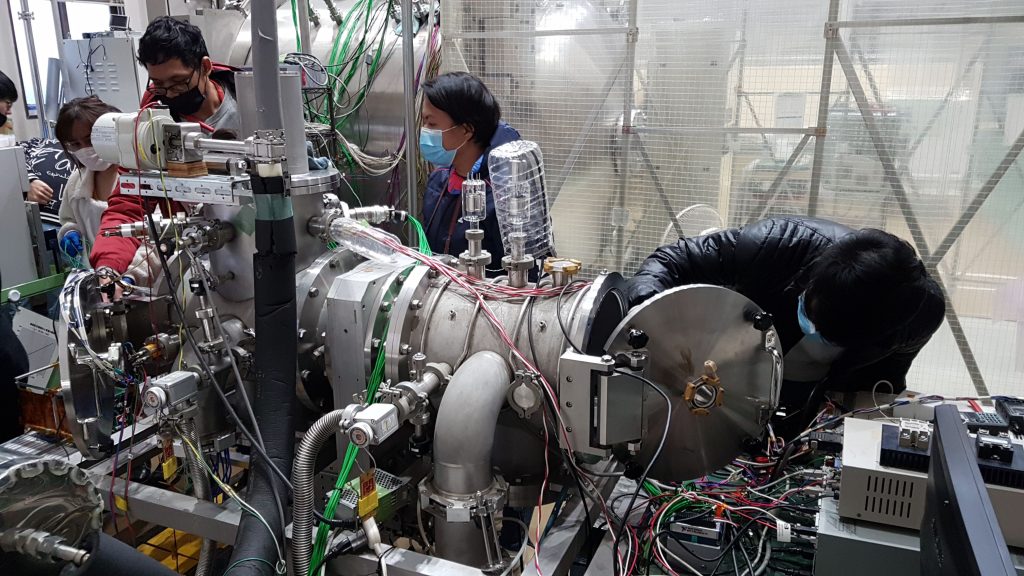
Photo courtesy of the 1st batch of STeP-UP Scholars
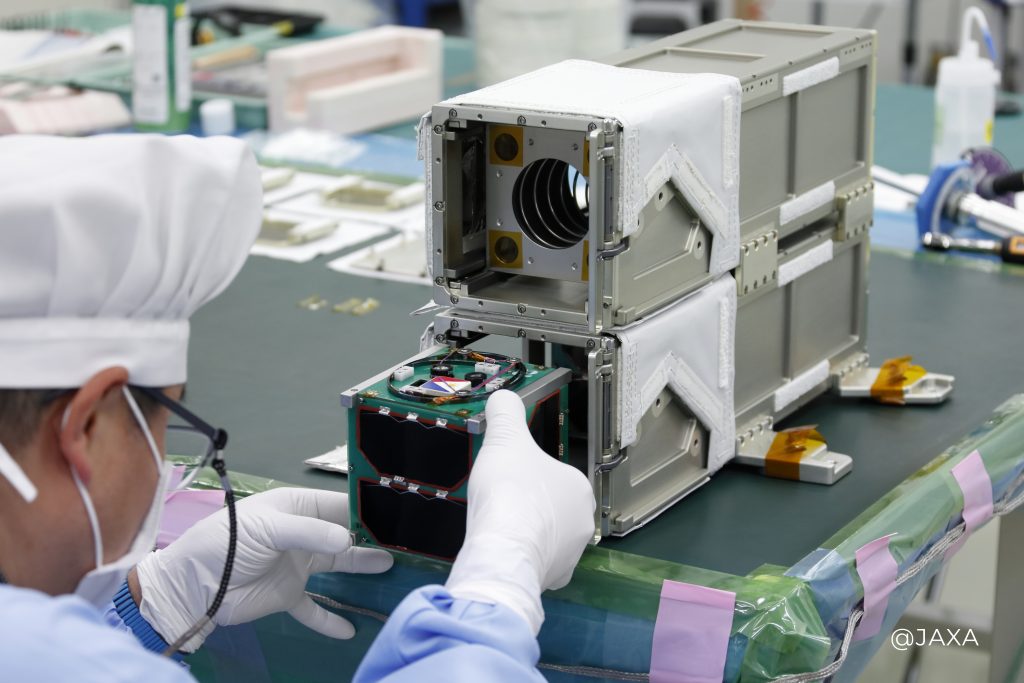
Photo courtesy of Japan Aerospace Exploration Agency (JAXA)
Other than that, business continues as usual for the STeP-UP Project: The operations of Maya-3 and Maya-4 will commence once they are deployed, Maya-5 and Maya-6 are under development by the second batch of scholars, and the STeP-UP team is continuing its other activities, as shared by STeP-UP Project Leader Prof. Paul Jason Co.
“Sustainability can be ensured by making sure that the knowledge gained from this is shared with as many HEIs [higher education institutions], as this ensures that there will be more people with the necessary knowledge to do the same,” he said. “While launching CubeSats would present some funding concerns, the knowledge about the development can still be learned without this.”
STAMINA4Space Program Leader Dr. Maricor Soriano congratulated the scholars and noted the collaborations that paved the way for the development of the CubeSats. “Building and operating something as complex as a satellite requires meticulous planning, rigorous design and testing of systems, and lots of support. Thus, we thank the Department of Science and Technology for funding our program, the Japan Aerospace Exploration Agency, and Kyushu Institute of Technology for the Joint Global Multi-Nation Birds Satellite Project. We are immensely grateful to both our Philippine and Japanese mentors for guiding our scholars. It is our aim at STAMINA4Space to gain mastery in building and operating satellites to spread this know-how and thereby give the very best service to our fellow Filipinos. We look forward to gaining more confidence to innovate in this field in order to support our nascent Philippine Space Agency,” she said.
In his congratulatory message during the JAXA launch program, PhilSA Director-General Dr. Joel Joseph Marciano, Jr. shared that “[l]ooking back to 2014, as we were beginning our journey in developing small satellite technologies and applications, we saw the value of engaging and partnering with fellow nations with common aspirations in space. As the Program Leader of the Philippine Microsat Program and its successor, the Space Technology and Applications Mastery, Innovation and Advancement (STAMINA4Space) at that time, it was clear that the way to go far and to achieve more in space would be to work with others around us,” he said. “It was around that time that I learned about the BIRDS project of the Kyushu Institute of Technology or Kyutech and saw that the spirit of community and cooperation fostered by the project was a good match and complement to the Filipino core value of ‘bayanihan’ (that is, of civic unity and cooperation). Different nations coming together to learn how to build satellites means that they will be helping each other, learning together through the ups and downs, and emerging from it with stronger ties and bonds that will serve them well for future cooperation.”

